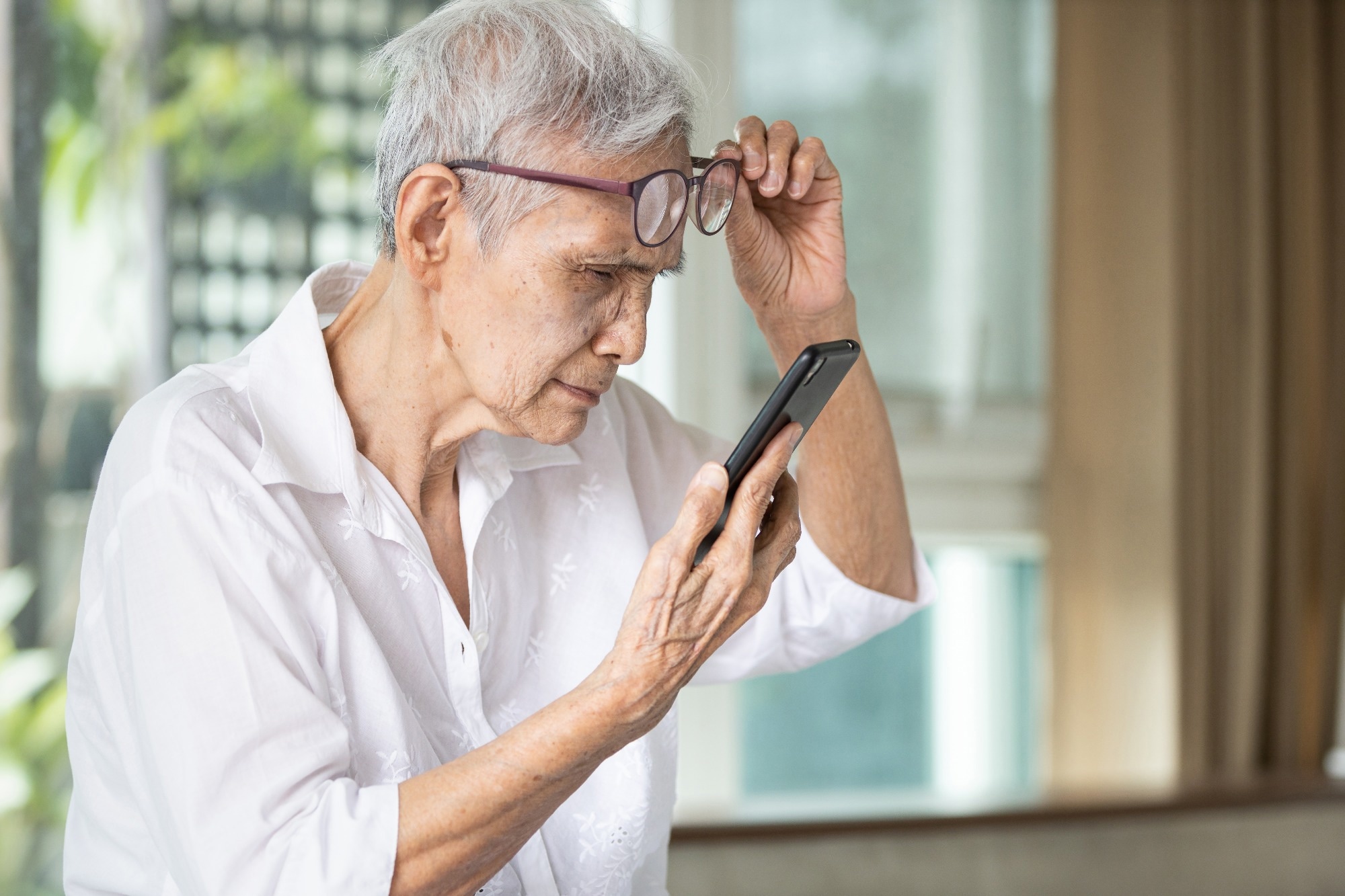A recent study published in JAMA Network Open reveals that higher levels of exposure to outdoor artificial light at night can increase the risk of incident exudative age-related macular degeneration.
 Study: Nighttime Outdoor Artificial Light and Risk of Age-Related Macular Degeneration. Image Credit: CGN089 / Shutterstock
Study: Nighttime Outdoor Artificial Light and Risk of Age-Related Macular Degeneration. Image Credit: CGN089 / Shutterstock
Background
Age-related macular degeneration (AMD) is characterized by progressive loss of central vision due to damage in the retina's macular region. The condition can potentially lead to irreversible blindness. AMD is a multifactorial disorder associated with a number of genetic as well as non-genetic risk factors.
Increasing age is the most prominent non-genetic risk factor for AMD. In addition, cigarette smoking and low antioxidant intake are the other consistent non-genetic risk factors. Among various environmental risk factors, light pollution is known to have a significant negative impact on the retina and optic nerve. High levels of light exposure can damage optic tissues.
In this study, scientists have investigated the effect of night-time exposure to outdoor artificial light on the risk of incident exudative AMD in South Korea. Outdoor artificial light at night refers to the changes in natural light levels at night due to human-made light sources. The exudative form of AMD is characterized by the formation of pathological choroidal neovascular membranes under the retina, which can cause leakage of fluid and blood.
Study design
The scientists collected demographical and medical data of adult individuals (aged 50 years and above) with newly diagnosed exudative AMD between January 2010 and December 2011 from the Korean National Health Insurance Service registration program database for rare and intractable diseases.
They also identified age- and sex-matched individuals who had not been diagnosed with exudative AMD until 2020 and included them in the analysis as study controls. The scientists acquired the 2010 – 2011 medical data of the patients and controls in 2021 to ensure a follow-up duration of at least 10 years.
They used the latest radiance-calibrated light-at-night data obtained from the National Geophysical Data Center to measure mean levels of outdoor artificial night-time light at participants' residential addresses during 2008 and 2009.
They assessed the association between night-time outdoor artificial light exposure and risk of incident exudative AMD after adjusting for sociodemographic features of the participants, comorbidities, and other environmental risk factors, such as night-time traffic noise and levels of particulate matter in the air.
Important observations
The study was conducted on a total of 126,418 individuals, including 4078 exudative AMD patients and 122,340 control individuals without the disease. Overall, the participants with higher night-time outdoor artificial light exposure had higher exposure to particulate matter and night-time traffic noise. In contrast, the participants with lower night-time outdoor artificial light exposure had lower physical activity levels.
After adjusting for potential confounding factors, the analysis indicated that higher levels of night-time outdoor artificial light exposure can significantly increase the risk of incident exudative AMD. An interquartile range (IQR; 55.8 nanowatts/cm2 /steradian) increase in night-time outdoor artificial light exposure was found to be associated with a hazard ratio of 1.67 for incident exudative AMD.
The analysis of the shape of the exposure-response curve for the association between night-time outdoor artificial light exposure and risk of exudative AMD revealed a non-linear, concave upward slope that became more pronounced at higher levels of light exposure.
A subgroup analysis involving 73,551 participants from urban areas showed that about 3.7% experienced incident exudative AMD between 2021 and 2011. A similar analysis involving 48,972 participants from rural areas indicated that about 2.5% of them experienced incident exudative AMD during the same period.
Further analysis revealed that an IQR increase in night-time outdoor artificial light exposure was associated with an increased risk of exudative AMD in urban areas but not in rural areas.
The stratified analysis of the hazard ratio of incident exudative AMD by personal characteristics at baseline revealed that the AMD risk from night-time outdoor artificial light exposure was significantly higher for older individuals, men, smokers, urban residents, individuals with higher body mass index, individuals with hypertension or dyslipidemia, and those with alcohol drinking habits.
Study significance
This population-level case-control study conducted in South Korea indicates that higher levels of night-time outdoor artificial light exposure can significantly increase the risk of incident exudative AMD.
Since AMD is the leading cause of irreversible blindness, future studies analyzing different levels of light exposure, individual adaptive behaviors, and potential mediators are needed to understand the relationship between light exposure and AMD development more conclusively.